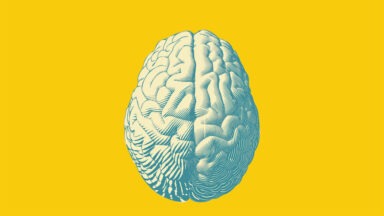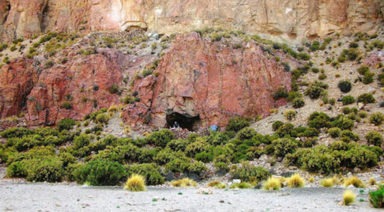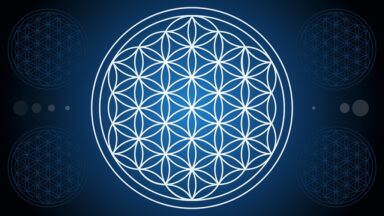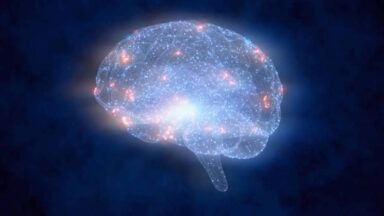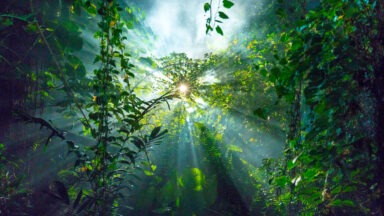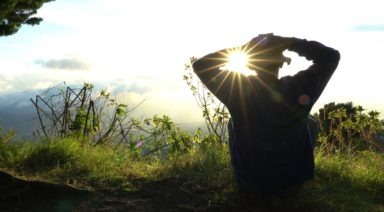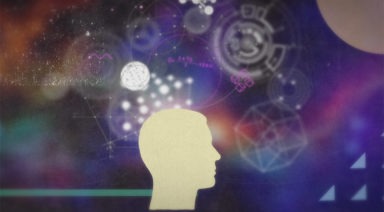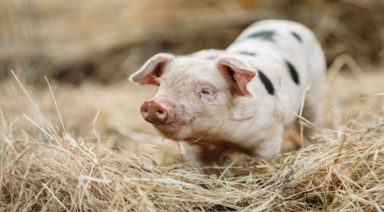New Gene Discovery May Explain Rapid Human Brain Evolution

A revealing new study on human evolution and brain development has just been published. Could this lend credence to the stoned ape theory of brain evolution?
About 300,000-800,000 years ago the human brain experienced a massive and accelerated growth spurt. Scientists have offered many explanations for how and why this may have occurred, but a new study out of Boston Children’s Hospital focused on a fast-evolving set of the human genome called human accelerated regions (HARS). Previous studies have found about 3,100 HARS during brain development, but the team at Children’s Hospital determined one HAR gene PPP1R17 could be responsible for or play a significant role in, rapid brain development. Further, they discovered this works differently in humans than in other animals.
Ben Stewart, the host of Gaia’s Limitless series, said,”[T]hese regions of the human DNA may hold some kind of an answer at the rapid explosion of human neo-cortex because if you think of it evolutionarily, there’s not been one creature, at least on planet Earth, that has been studied that had any organ increase in size as large and as rapidly as the human brain did, so there’s definitely some unanswered questions there.”
“I’m pretty sure that these HARS regions are being looked at for something very unique in the evolution of the brain, and my own personal twist on it is this also might be important when we start looking at brian-machine interfaces and how the brain can potentially cause mutations to adapt to some kind of technology in the brain to enhance or evolve the human brain,” Stewart said.
How could this new discovery be related to the Stoned Ape theory?
“There’s a possibility that the Stoned Ape theory could lead into this. Now, the Stoned Ape theory was really popularized by Terence McKenna,” Stewart said. “Over time, you would have some of our ancient ancestors, hominids, that would be following behind bovine creatures, cows, and in the cow patties in the fields that would naturally, having followed these creatures around for hundreds of thousands of years or whatever it might have been, that they would have started eating the mushrooms, the psilocybin mushrooms that grow naturally in cow patties. These experiences tickling the language centers and other parts of the brain, bringing down the rigidity of the default mode network, and activating other communication hubs within the brain, that could actually explain the rapid explosion of the human neocortex.”
“In this article, they’re saying that these human accelerated regions act differently in humans than they do in primates or creatures like mice and ferrets that they’ve looked into now. So, potentially if there is some connection with the Stoned Ape theory, that psychedelics or psychotropics helped in the expansion of the human neocortex, and made us as, at least psychologically, so much different than the rest of the creatures on Earth, then there may be something to look at here.”
Ketamine Therapy Proves Powerful For Treatment-Resistant Depression

A powerful FDA-approved anesthetic drug once used mainly in operating rooms and on the battlefield is quickly gaining ground as one of the most promising therapies for treatment-resistant mental health conditions.
First discovered as an anesthetic in the 1950s, ketamine has been used in the treatment of a wide range of physical conditions, especially pain management. Starting in the early 1970s, doctors began to find that it can also be very effective in alleviating mental health issues such as depression, anxiety, PTSD, and addiction. Today it is ever more frequently being studied and legally used as an off-label medication to manage conditions that are particularly resistant to treatment with conventional pharmaceuticals.
The latest in a series of recent studies has found that ketamine can quickly and dramatically decrease chronic and suicidal thoughts. Dr. Naveen Thomas is a psychiatrist who has been using ketamine in his practice for years.
“I and many of my colleagues have of course had tremendous success in using ketamine in people who are really suffering from depression. I’ve had a lot of success in treating people with Post-traumatic Stress Disorder,” Dr. Naveen said.
“And some of these folks have spent years and years doing absolutely the best they could using such a wide variety of the conventional treatments, be they various medication treatments, be they various forms of psychotherapy. We’ve seen really wonderful effects.”




